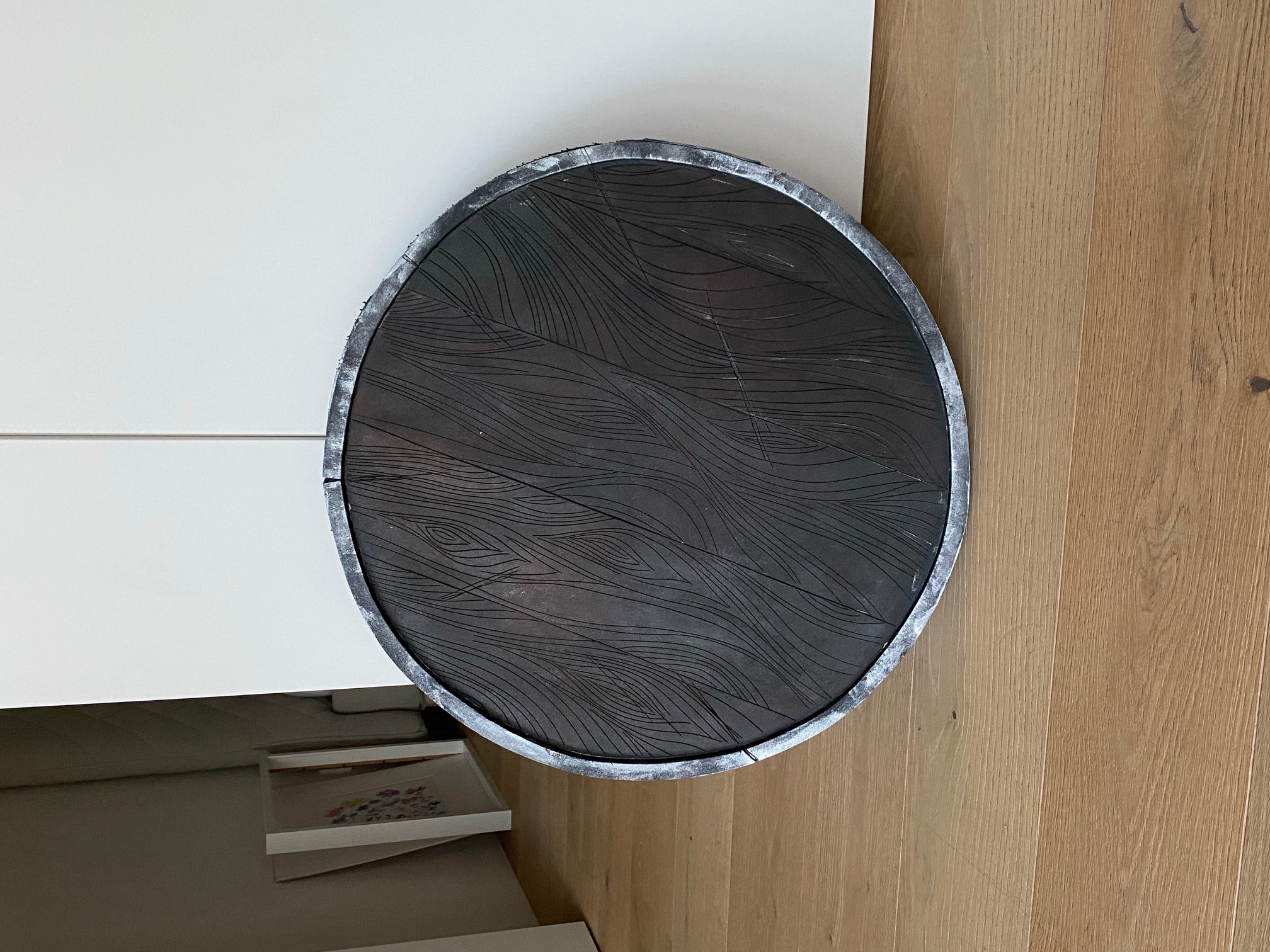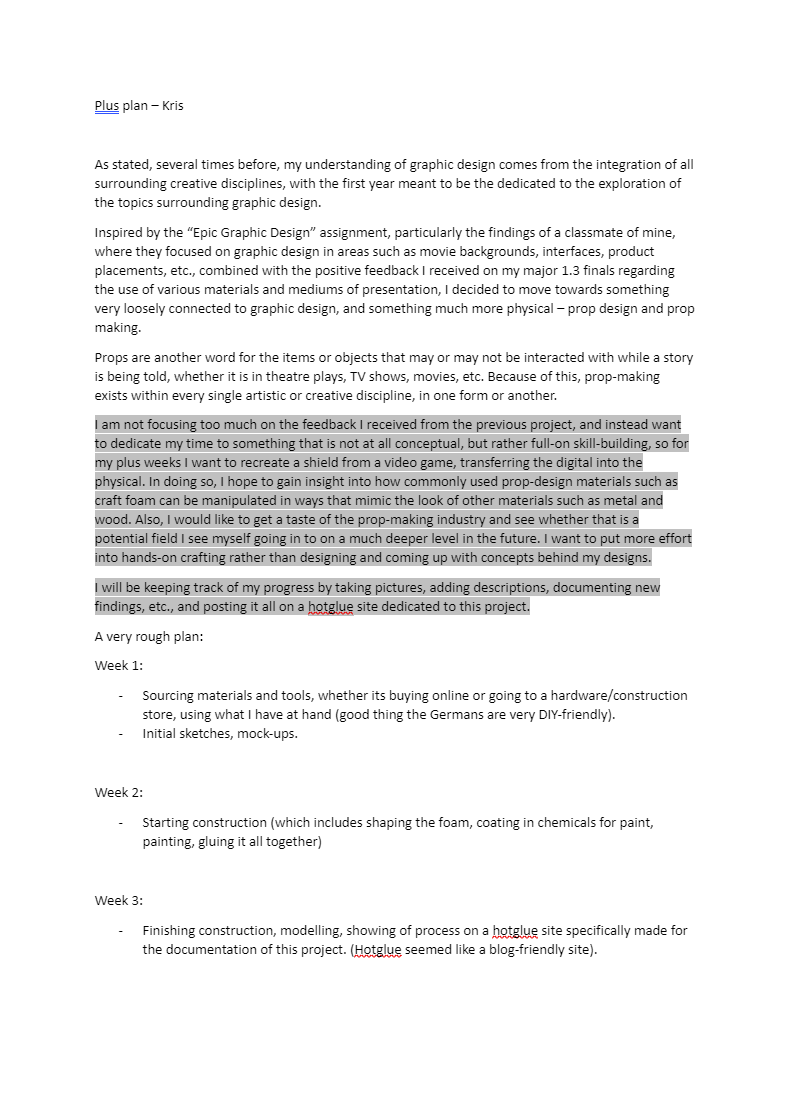My goal for the first year at the academy was to spread out into the various different sections, disciplines, and directions in order to root myself deeper into the academy and see what it is that is offered.
This process was cut short due to the academy closing down, however the discipline area mustn't be affected. In the interest of carrying on with my goal, I decided to move to the area of prop design and prop making.
I knew I wanted to recreate an item from a game that was very inspiring, both to learn how to handle materials such as foam and build completely new hands-on skills, but also because I have attempted this in the past, but was never able to finish.
The item is the Fisherman's Shield, depicted on the left.
I started off with ordering the necessary materials such as craft foam, special contact glue, necessarily spray chemicals that protect the work, colors, etc., etc.,
This all came very late.
When the foam arrived, I cut out two circles, as I needed the shield to be a little thicker to avoid bending. These were then glue together.
Seeing how the game doesn't really give you any dimensions, I just had to eyeball it, so I used a size that seemed both logical and comfortable when it comes to a shield for someone my height.
Here are the two sections glued together. The long bit on the floor is what is supposed to be the metal around the shield, used for reinforcement, durability and protection.
That was also glued to the shield.
I used a knife to cut the texture of wood into the foam, as I read online that if you heat the foam up afterwards, any cuts will be visible. While that was labelled as a negative, I thought that maybe that would help me with achieving a more natural look, as wood isn't just straight. I used a different grain for each "plank", and separated the "planks" using much deeper cuts. The result of that + heating it up is underneath! I loved the look that I achieved.
After getting the look that I wanted out of foam, it was time to coat the item with the protective spray. While any foam spray works, I used PlastiDip, which serves as a waterproof, detail-preserving coat, as well as a good first coat for paint to get on to, which was going to be the next step.
After coating the shield, I moved on to cutting out stencils that will be used to spray the design on to the front, as well as painting the wood in colors that resemble the actual material, as well as painting the metal frame.
Dry-brushing seemed to work best, as water can result in an unnatural look when it comes to coloring.






1. What are your main insights developed during the plusweeks?
I went into this with the intention to learn more about prop design and prop-making, as well as to see whether that is an industry I'd see myself in. I prefer hands-on work so this seemed like heaven, luckily - it was!
From working with an entirely new and challenging material - foam - to working with intense chemicals such as PlastiDip and contact cement, I learned ways to incorporate these tools into the creation of potential new hands-on pieces.
I also learned what not to do, such as not wearing a mask while working with glue and using PlastiDip, even outside, which resulted in me having to stay in bed for two days due to poisoning.
All in all, prop making seemed like an incredibly interesting way to spend 3 weeks, and further complicated my thoughts when it comes to what it is that I want to study.
2. What does your process / project communicate about you and your profile as a designer?
I took the liberty of just eyeballing most of the things that I did when it came to this shield. I didn't want this to be an exact replica, as that was never the focus. You can't really create something perfect on the first try, so trying to achieve that seemed like far too much stress. Instead, I chose to focus more on the process - trust the process - and see where that takes me. I knew that if I gave each part of the process time, it would result in a far better looking end product.
That kind of mentality can be applied to anything, really.
Regardless, this was very much a test of patience which I used as a way to position myself back into the routines that I had while working on my school assignments. I'm glad I was able to make these connections while still working on something that I wanted, as opposed to working on something that was assigned to me.
Seemed like a very nice "cherry on top"-ish decision to have this assignment at the end of the academic year.
